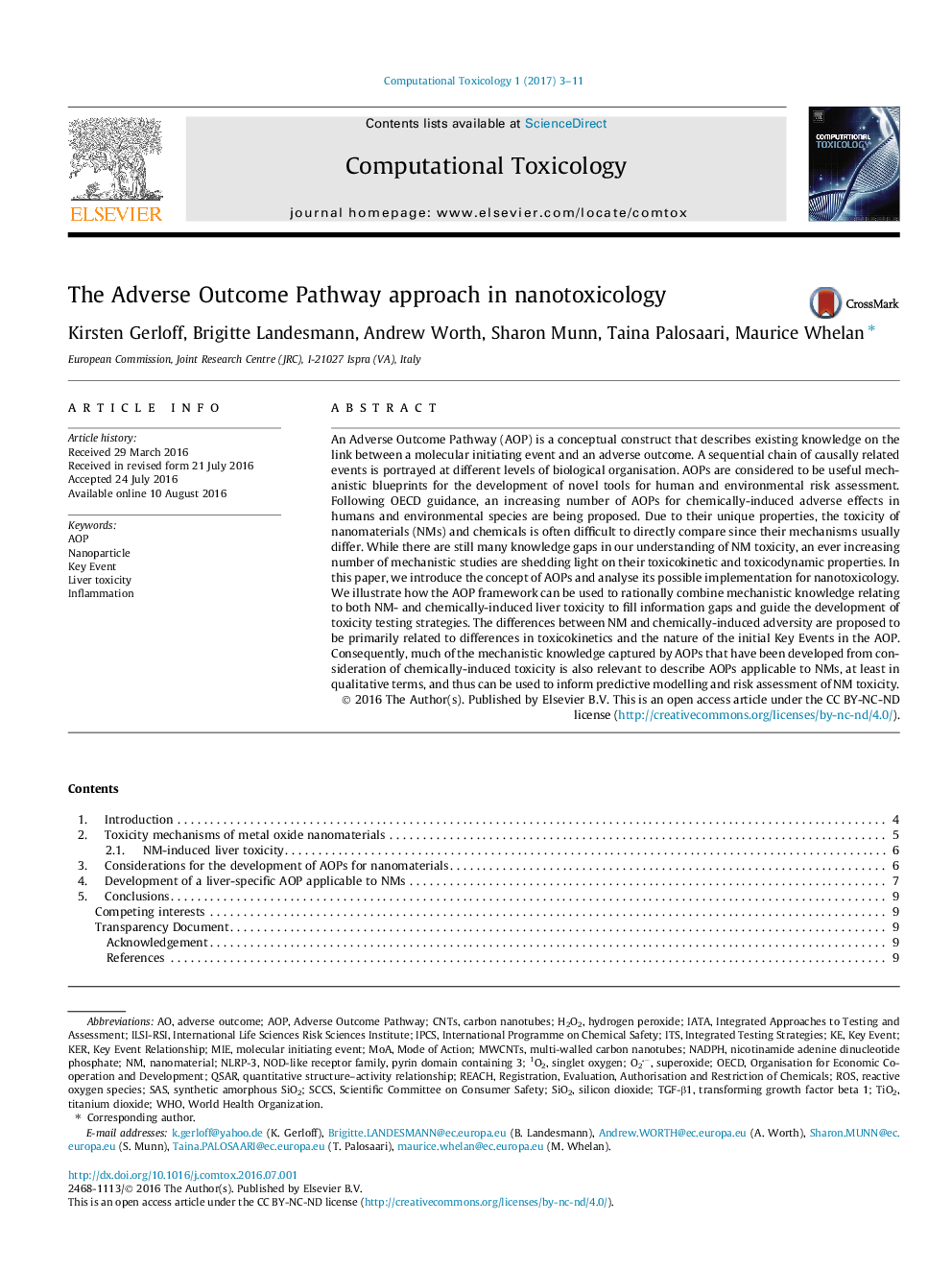| کد مقاله | کد نشریه | سال انتشار | مقاله انگلیسی | نسخه تمام متن |
|---|---|---|---|---|
| 5517326 | 1543165 | 2017 | 9 صفحه PDF | دانلود رایگان |
- The applicability of Adverse Outcome Pathways (AOPs) to nanotoxicology is described.
- AOPs can be developed also where nanomaterial (NM)-specific information is lacking.
- Existing mechanistic knowledge can be used to describe AOPs applicable to NMs.
- This approach can direct further research by identifying knowledge gaps.
- Ultimately nanomaterial hazard assessment can be supported.
An Adverse Outcome Pathway (AOP) is a conceptual construct that describes existing knowledge on the link between a molecular initiating event and an adverse outcome. A sequential chain of causally related events is portrayed at different levels of biological organisation. AOPs are considered to be useful mechanistic blueprints for the development of novel tools for human and environmental risk assessment. Following OECD guidance, an increasing number of AOPs for chemically-induced adverse effects in humans and environmental species are being proposed. Due to their unique properties, the toxicity of nanomaterials (NMs) and chemicals is often difficult to directly compare since their mechanisms usually differ. While there are still many knowledge gaps in our understanding of NM toxicity, an ever increasing number of mechanistic studies are shedding light on their toxicokinetic and toxicodynamic properties. In this paper, we introduce the concept of AOPs and analyse its possible implementation for nanotoxicology. We illustrate how the AOP framework can be used to rationally combine mechanistic knowledge relating to both NM- and chemically-induced liver toxicity to fill information gaps and guide the development of toxicity testing strategies. The differences between NM and chemically-induced adversity are proposed to be primarily related to differences in toxicokinetics and the nature of the initial Key Events in the AOP. Consequently, much of the mechanistic knowledge captured by AOPs that have been developed from consideration of chemically-induced toxicity is also relevant to describe AOPs applicable to NMs, at least in qualitative terms, and thus can be used to inform predictive modelling and risk assessment of NM toxicity.
Journal: Computational Toxicology - Volume 1, February 2017, Pages 3-11
